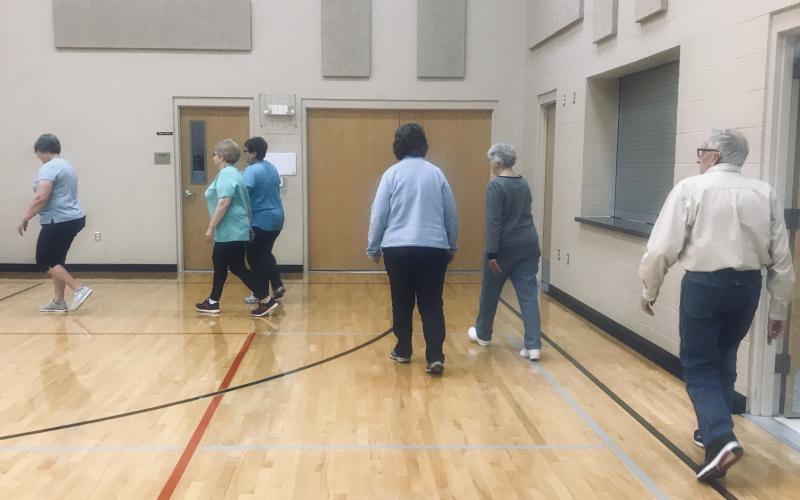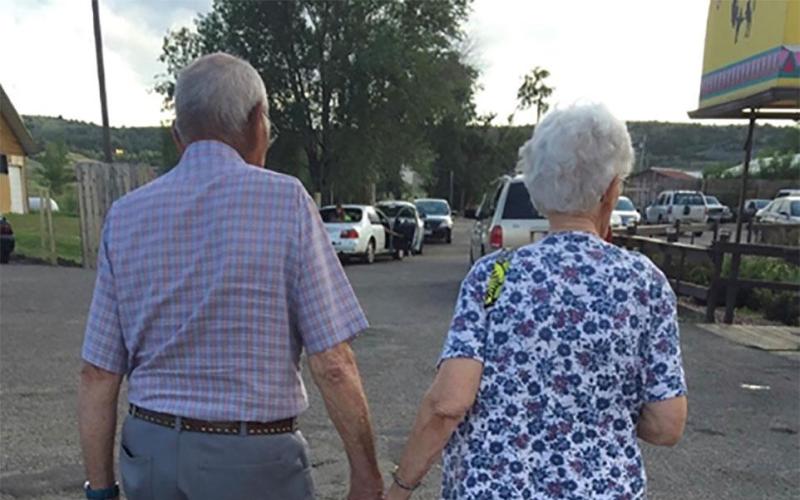Written collaboratively by Nikki Prosch, former SDSU Extension Health & Physical Activity Field Specialist, and Mariah Reil.
Arthritis is a common condition in which joints in the body become inflamed. Perhaps yourself, or someone you know, is living with arthritis pain. According to the South Dakota Behavior Risk Factor Surveillance System, approximately 158,000 adults in South Dakota have some form of arthritis and of those 158,000, 73,000 report that their arthritis limits them from their usual activities due to pain or other symptoms. There are various types of arthritis, including osteoarthritis, rheumatoid arthritis, fibromyalgia, gout, and psoriatic arthritis. Physical activity is a key behavior to help manage joint symptoms and pain. To get started, let’s first review a few different types of arthritis and then explore ways to increase mobility and manage pain with physical activity.
Types of Arthritis
Osteoarthritis
This type of arthritis occurs when the protective layer of the joint begins to wear away, making it harder and more painful to move the joint. Because the protective layer is breaking down, bones that meet at a joint begin to rub together and cause pain.
Rheumatoid Arthritis
Rheumatoid arthritis is an autoimmune disease. It occurs when the body’s immune system attacks healthy joints and organs in the body, particularly the synovium or the lining of the joints. When this occurs over and over again, constant inflammation causes the joint to break down and the damage can be permanent.
Fibromyalgia
This unique type of arthritis occurs when there is a difference between how the brain processes pain and how the spinal cord processes pain. A person with fibromyalgia will feel pain differently, whether more or less severe, than a person without fibromyalgia. Pain across the body and joints is common in fibromyalgia, and the length of pain can vary. People with fibromyalgia may also struggle with sleep issues or trouble concentrating.
Gout
Gout occurs when uric acid crystals build up in the body. If the body cannot remove them or if the body makes too much, uric acid crystals can accumulate in the blood and the excess can build up in the joints. Gout causes painful movement of the joints due to inflammation, usually in larger joints such as the big toe. Gout can come in ‘flares’, which means the inflammation and pain can come on very quickly.
Psoriatic Arthritis
Another autoimmune disease, psoriatic arthritis also occurs when the body’s immune system attacks itself. This causes inflammation, commonly seen in the joints (arthritis), connective tissue (called enthesitis), and skin (called psoriasis).
Physical Activity and Arthritis
Physical activity is one of the most effective ways to manage the symptoms of arthritis, decrease arthritis pain, and improve overall health! According to the American College of Rheumatology, osteoarthritis guidelines suggest exercise as the first-line non-pharmacological strategy to manage symptoms of arthritis. However, the South Dakota Behavior Risk Factor Surveillance System data shows that 29.2% of South Dakota adults diagnosed with arthritis report no engagement in physical activity. How can people with arthritis get moving in a safe and effective way?
Joint-Friendly Physical Activity
Being physically active has many benefits for people with arthritis. Joint-friendly physical activity can help decrease the pain of arthritis and are low-impact. This means that these types of exercises put little stress on the body and reduce the risk of injury. Joint-friendly physical activity is safe and effective for the management of arthritis. Examples of joint-friendly exercises include:
- Walking
- Biking
- Swimming
SDSU Extension Programs
Did you know that SDSU Extension has programs available for people with arthritis to participate in safe and effective physical activity?
Walk With Ease
Walk With Ease is a 6-week walking program aimed at helping people start or maintain a safe walking program. Walk With Ease consists of 3 sessions per week, and each session covers a brief education topic, warm-up and cool-down exercises, and a 10-35 minute walk done at participants’ own pace. Participants can also engage in the exercises outside of the sessions using the class materials. This program is open to all participants, as long as the participant can be on their feet for 10 minutes without increased pain. The program is designed to help participants get active, walk safely, and feel great. For more information, visit the Walk With Ease program page.


